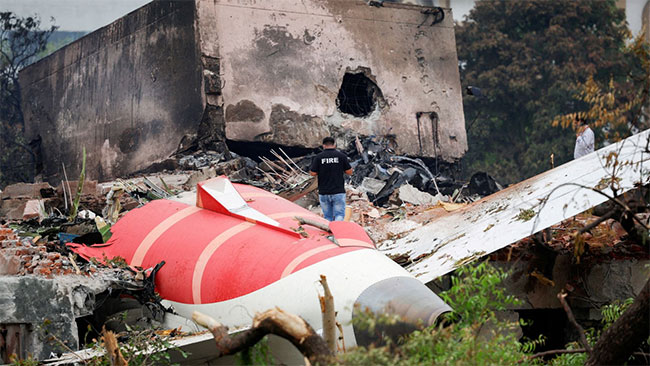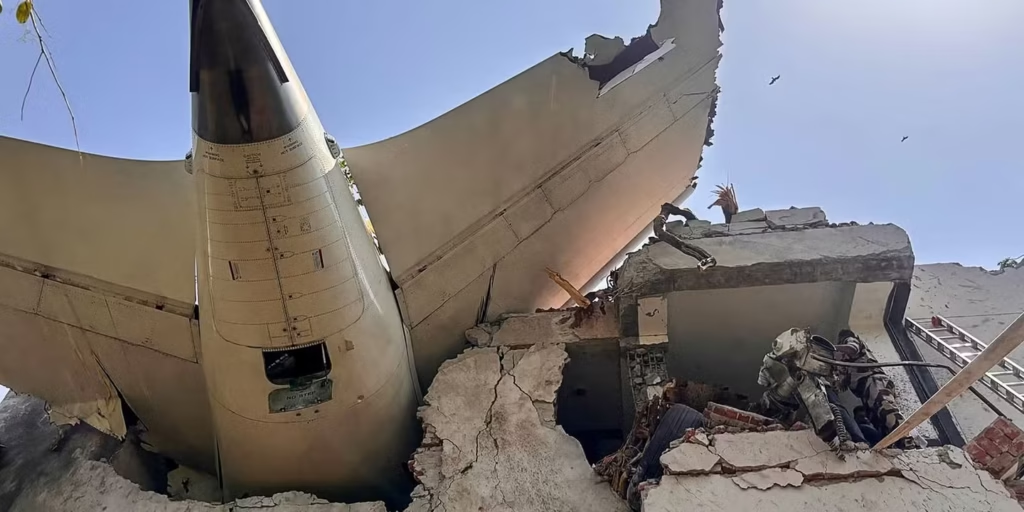
An initial report issued by India’s Aircraft Accident Investigation Bureau (AAIB) has pinpointed a serious failure: both engines of Air India Flight 171 experienced an unexpected interruption in fuel supply mere seconds after departing from Ahmedabad on June 12, which directly resulted in the disastrous crash into a college dormitory.
⏱️ The Deadly Moments
Based on the cockpit voice recordings and flight data, around 08:08:42 UTC, the fuel-control switches for both engines changed from RUN to CUTOFF within one second of one another.

The pilots asked each other—
“Why did you remove it?”
“I did not accomplish that.”
Standard restart procedures were initiated, but at a low altitude of approximately 650 feet, attempts to relight the engine came too late—the aircraft lost thrust and fell to the ground,leading to the fatalities of 241 passengers and crew members, along with a minimum of 19 people on the ground.
🔐 Protected Switches, Unclear Reason
These fuel cutoff switches are protected by locking systems, rendering accidental activation very unlikely.
Professionals believe human mistake is likely, yet the chance of a mechanical failure or software error—especially in connection with previous FAA warnings about switch lock problems—continues to be investigated.
🔍 Inquiry and Supervision
The U.S. NTSB, along with representatives from Boeing and GE Aerospace, is involved, however, the AAIB has not made any safety recommendations so far.
The black boxes were retrieved in late June and examined in Delhi—crucial yet still tentative information.
The initial results have elicited distinctly varied responses. Numerous families of victims seek greater transparency, questioning if the movement to switch indicated sabotage, a malfunction, or a tragic mistake.
In the interim, pilot unions are voicing concerns about the lack of crew representation in the inquiry.

⚙️ Broader Safety Precautions
After the accident, India’s DGCA required extra inspections of Air India’s Boeing 787 fleet, concentrating on fuel systems, engine controls, and safety adherence.
Aviation authorities globally are currently examining the event, sparking worries about seemingly infallible protections.
🕰️ What Lies Ahead
The complete inquiry is anticipated to progress over the coming year, seeking to establish the reasons behind the switch movement, if aviation standards were violated, and ways to avert similar disasters in the future. As the 787 is among Boeing’s most frequently utilized models, the result may lead to safety enhancements across the industry.
This startling discovery—that essential fuel supplies were deliberately or accidentally severed during flight—adds new importance to worldwide aviation safety measures. The upcoming months will be crucial in understanding the series of failures that turned a standard departure into a catastrophic accident.



great